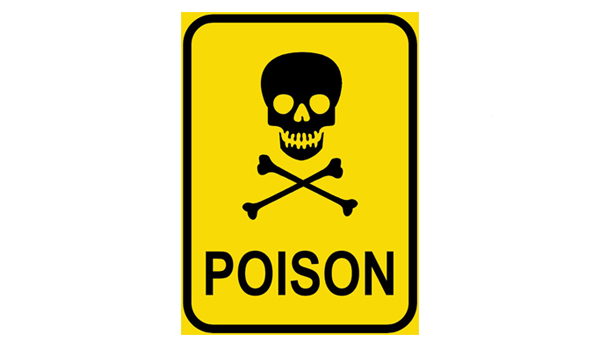Is Nicotine Poisoning Possible with E-Cigarettes?

The growing popularity of electronic cigarettes (E-cigs) has become a concern to health professionals and government regulators, because so little research has been done to assess how safe and effective these devices are. E-cigs are currently exempt from FDA (U.S. Food and Drug Administration) regulation, although this organisation is actively fighting to gain jurisdiction over these devices (Yamin et al., 2010).
E-cigs operate by electronically vaporizing a solution containing nicotine, which is then inhaled by the user. Touted as safer than cigarettes, since most of the carcinogens are eliminated from the smoking experience, E-cigs are being primarily advertised as a safe, smoking cessation device. Determining whether these claims are true will require a few more years of research (Yamin et al., 2010) and until then the World Health Organisation has proposed banning E-cig manufacturers from making such claims (Zapobiegawczej et al., 2010). The risk of nicotine poisoning with E-cig use has also not been studied, but the following discussion suggests the risk is relatively low.
Nicotine Delivery Device Safety
The amount of nicotine delivered while smoking a single tobacco cigarette is around 1 mg (reviewed by Solarino et al., 2010). By comparison, between 10 and 50 mg of nicotine can be absorbed by smoking a tobacco cigar. Transdermal patches deliver between 7 and 21 mg of nicotine, but this occurs gradually over a 24 hour period. Symptoms of nicotine toxicity begins somewhere between 2-5 mg of absorbed nicotine, depending on how accommodated an individual has become to nicotine use. The lethal dose for most people is between 30 and 60 mg.
The symptoms of nicotine poisoning include the following (Horan, 1977):
• Nausea – rapid onset
• Salivation – rapid onset
• Abdominal pain
• Vomiting
• Severe diarrhea
• Headache
• Dizziness
• Disturbed hearing and vision
• Mental confusion
• Muscle weakness
• Hypertension
• Slow and then rapid heart rate
• Cardiac arrhythmias
• Loss of consciousness
• And rarely, death
A small number of independent studies investigating the nicotine delivery efficiency of E-cigs have been performed. Without exception, the consensus is that the nicotine dose actually delivered is far below what’s promised (reviewed by Vansickel et al., 2010). For example, Vansickel et al., (2010) compared serum nicotine levels between individuals smoking regular cigarettes and two brands of E-cigs. Within five minutes of smoking a tobacco cigarette, serum nicotine levels peaked at around 18-19 ng/mL. By comparison, the nicotine serum levels of E-cig smokers were below detection limits. These results indicate that E-cigs do not deliver an equivalent nicotine dose. On the other hand, the risk of nicotine poisoning is much lower than with regular cigarettes.
Swallowing tobacco induces vomiting because of the nicotine toxicity. This limits the dosage that can be absorbed when exposed in that manner. Although the risk of nicotine toxicity is relatively low when using E-cigs as recommended, the nicotine solution contained in the cartridges presents a safety concern that tobacco leaf doesn’t. For example, should the solution contained in the cartridge be swallowed, or spilled on the skin, the risk of nicotine poisoning could be much greater than that posed by tobacco products (Cobb et al., 2010). This risk is moderated somewhat by independent research findings that revealed nicotine concentrations in cartridges from several E-cig manufacturers were less than half of the advertised concentration.
Until E-cig manufacturers achieve the advertised nicotine dosage levels, it seems unlikely that E-cig use could represent a real risk for nicotine poisoning. The E-cig cartridges though, may pose a real safety risk, especially around children.
